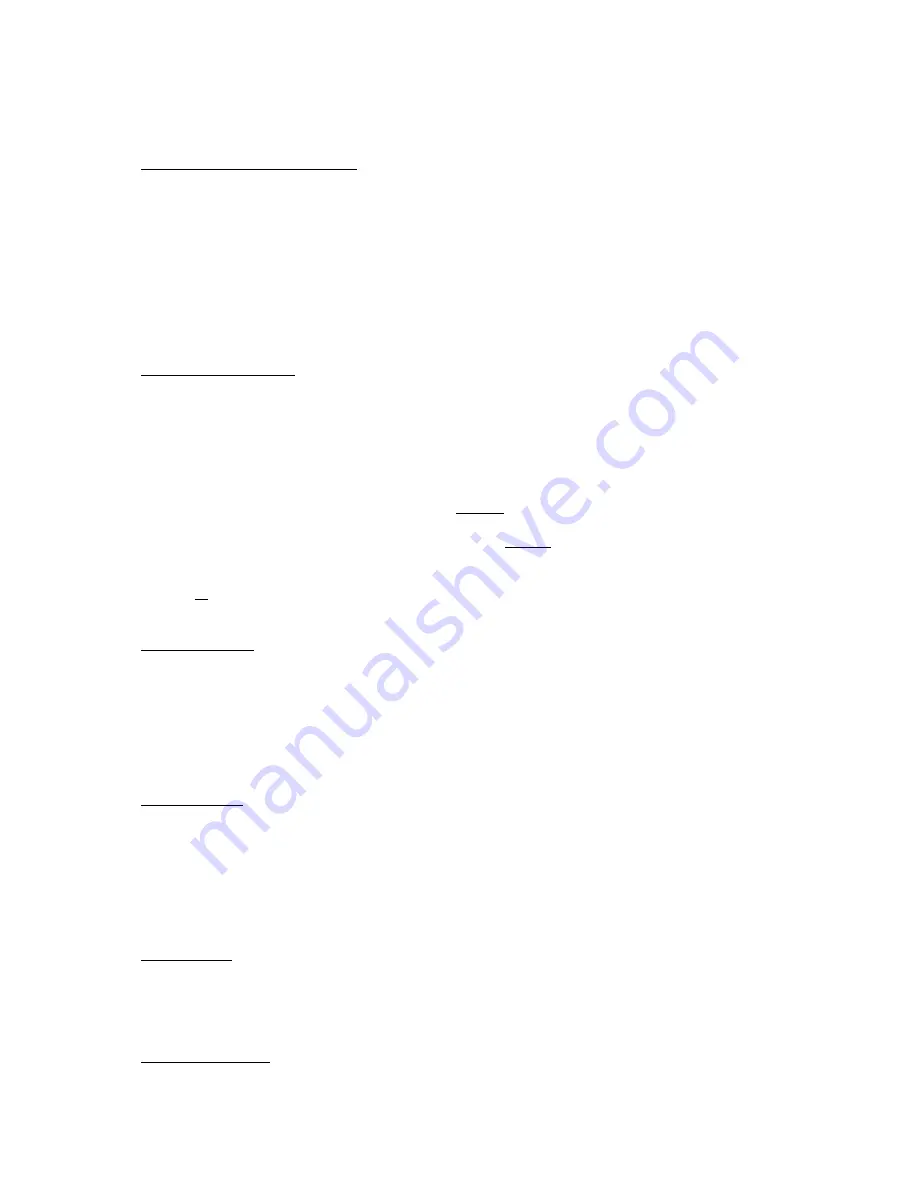
Thread the other end of the mainsheet:
d.
Downwards and around the fiddle/becket of the hull mounted block. (Travelling in an aft/rearward direction)
e.
Upwards and around the main sheave/pulley of the boom mounted block. (Travelling in a forward direction)
f.
Downwards and around the main sheave/pulley of the hull mounted block. (Travelling in an aft/rearward direction)
g.
Finally tie a figure of eight stopper knot in the end of the mainsheet to prevent accidental unthreading.
10. 4:1 Mainsheet Ratchet Block Fitment
(SailCube Race – SCR)
a.
Remove the white nylon counter sunk machine screws positioned immediately behind the stainless steel mainsheet
fairlead on the hull.
b.
Where the nylon counter sunk machine screws were previously located - Attach the race specification stainless steel
deck fairlead (2 hole) using the stainless steel M5x10mm pozi pan machine screws supplied.
c.
Remove the shackle pin and ring from the mainsheet ratchet block. Loop the shackle beneath the aft deck fairlead (Just
fitted) and place the compression spring over it.
d.
While compressing the spring, place the mainsheet ratchet block at the top of the spring and align the hole in the
bottom of the block with the holes in the shackle.
e.
Secure the ratchet block to the shackle using the pin and ring.
11. Rigging The 4:1 Mainsheet
(SailCube Race – SCR)
a.
Shackle the mainsheet fiddle/becket block with screw shackle on to the hull mounted stainless steel mainsheet fairlead
.
b.
Clip the mainsheet fiddle/becket block with trigger shackle on to the boom mounted stainless steel mainsheet bridle
ring
.
c.
Tie one end of the mainsheet on to the fiddle/becket of the hull mounted block using a bowline loop.
Thread the other end of the mainsheet:
d.
Upwards and around the fiddle/becket of the boom mounted block. (Travelling in an aft/rearward direction)
e.
Downwards and around the main sheave/pulley of the
forward
hull mounted block. (Travelling in a forward direction)
f.
Upwards and around the main sheave/pulley of the boom mounted block. (Travelling in an aft/rearward direction)
g.
Downwards and around the sheave/pulley of the hull mounted
ratchet
block. (Travelling in an aft/rearward direction)
h.
Ensure the ratchet block makes a ratchet like noise when pulling the tail on the mainsheet.
i.
If the block does not make a ratchet like noise, either the mainsheet is travelling through the ratchet block in the wrong
direction
or
the ratchet switch is turned off.
j.
Finally tie a figure of eight stopper knot in the end of the mainsheet to prevent accidental unthreading.
12. Rigging The Painter
Take the painter rope and tie a tight bowline loop directly on to the rope loop in the centre of the mast deck plate bridle.
Thread the other end of the painter rope:
a.
Through the integral hull bow bush. (Travelling in a forward direction)
b.
Tie a figure of eight stopper knot in the rope end.
c.
Neatly coil up the painter rope until the figure of eight stopper knot touches the outer hull/bow surface.
d.
Place the neatly coiled up painter in the bow area of your SailQube ready for convenient deployment.
13.
Rudder Assembly
a.
The tiller arm machine screws and washers should already be attached to the tiller arm.
b.
Remove these machine screws before aligning the two holes in the tiller arm with the two holes in the top of the rudder
blade. (Ensure the tiller extension mounting bracket faces upwards.)
c.
Screw the machine screws through the aligned holes before placing washers over each of the protruding threads.
d.
Wind the nylon lock nuts on to the protruding threads carefully.
e.
The lock nuts should be tightened until the tiller arm is secure but do not over tighten!
f.
Clip the tiller extension in to its mounting bracket on the uppermost forward surface of the tiller arm.
14.
Rudder Fitment
a.
Align the pintle pins on the rudder above the gudgeon holes on your SailCubes transom.
b.
Push the rudder downward making sure the pintle/gudgeon sets and the rudder retaining clip engage correctly.
c.
To remove the rudder, press in the rudder retaining clip while lifting the rudder upwards.
d.
Once the upper pintle clears the retaining clip the rudder will be released.
15.
Dagger-board Fitment
a.
Locate the hole in the handle of the dagger-board. This identifies the dagger-boards forward/leading edge.
b.
The forward/leading edge of the dagger-board should always be positioned closest to the bow when sailing.
c.
Only place the dagger-board into the dagger-board case when the boat is in the water.
d.
The dagger-board should be lowered gradually as you sail into deeper water.
Summary of Contents for Sailing Boat
Page 1: ...Owners Rigging Manual ...



























